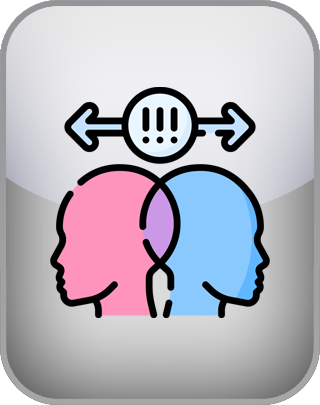Academically reviewed by Dr. Jennifer Schulz, Ph.D., associate professor of psychology
Borderline Personality Inventory (BPI) Test
The Borderline Personality Inventory (BPI) is a self-report test designed to assess borderline personality organization, based on the work of renowned psychiatrist Otto Kernberg’s theory. It features a streamlined 53-item true/false format, making it quick and easy to administer, with a focused subset for effective screening. The BPI is both reliable and valid, with strong discriminatory power for identifying borderline traits. Widely used in clinical and research settings, it provides valuable insights for understanding and addressing borderline personality features efficiently.
To take the test, enter your input below.
Question 1 of 49
I enjoy having control over someone, feeling that I can shut them out of my life as needed.
NEXT
The Borderline Personality Inventory (BPI) is a self-report psychological assessment tool developed to evaluate borderline personality organization. Grounded in the theoretical framework of Otto Kernberg, a prominent psychiatrist and psychoanalyst, the BPI focuses on assessing the core dimensions of borderline personality traits: identity diffusion, primitive defenses, impaired reality testing, and fear of closeness (fusion). These facets reflect Kernberg’s structural theory of personality, which delineates borderline personality organization as an intermediary between neurotic and psychotic structures, characterized by specific patterns of instability in emotions, self-image, and interpersonal relationships.
The BPI consists of 53 true/false items designed to comprehensively explore the symptoms and traits associated with borderline personality. Among these, a subset of 20 items, known as the Cut-20, has been validated for its strong discriminatory power. The Cut-20 functions as a quick screening tool to identify individuals who may likely exhibit borderline personality organization. A high score on the Cut-20 suggests significant emotional dysregulation, unstable interpersonal relationships, and identity disturbances, which are hallmarks of borderline traits.
Conceptual Foundation
The BPI is based on Kernberg’s definition of borderline personality organization, which emphasizes three primary criteria:
- Identity Diffusion: A fragmented and unstable sense of self that leads to difficulties in defining personal identity and maintaining consistent self-concepts over time.
- Primitive Defenses: Maladaptive defense mechanisms such as splitting, projection, and denial, which affect interpersonal relationships and emotional regulation.
- Impaired Reality Testing: A partial or transient distortion in the perception of reality, often seen in heightened stress or conflict.
An additional criterion assessed by the BPI is fear of closeness, reflecting difficulties with intimacy and a tendency to feel trapped in close relationships. This trait aligns with Kernberg’s emphasis on the tension between dependency and autonomy in borderline individuals.
Structure and Scoring
The BPI’s structure allows for both dimensional and categorical assessments:
- Dimensional Assessment: The test measures severity across the four facets, providing a nuanced understanding of borderline personality traits.
- Categorical Assessment: The Cut-20 subset offers a clear threshold to distinguish individuals with borderline traits from those without.
Each item is scored as either true or false, with specific items grouped into subscales corresponding to the four core facets. The Cut-20 score is calculated separately, typically with a threshold score (e.g., ≥10) to indicate the likelihood of borderline personality traits.
Applications
The BPI is widely used as a screening tool for research and clinical purposes. It identifies individuals who may benefit from further assessment or therapeutic intervention. In clinical settings, it aids in tailoring psychotherapeutic approaches to address the unique emotional and relational challenges associated with borderline traits. Additionally, the BPI’s dimensional nature allows for monitoring changes over time, making it a useful tool for evaluating treatment outcomes.
Limitations
Despite its strengths, the BPI has limitations. As a self-report tool, it relies on individuals' ability to accurately reflect on and disclose their experiences, which can be influenced by denial or a lack of self-awareness. Additionally, while it provides valuable insights into borderline traits, it does not replace clinical interviews or comprehensive diagnostic evaluations.
The BPI, grounded in Kernberg’s influential theory, is a robust tool for assessing borderline personality organization. By capturing the complexities of identity, defense mechanisms, reality testing, and relational dynamics, it serves as a valuable resource for both clinicians and researchers in understanding and addressing borderline traits.
As the publishers of this free test, which allows you to screen yourself for borderline personality organization, we strived to make the test as reliable and valid as possible by subjecting this test to statistical controls and validation. However, free online quizzes such as the present test do not provide professional assessments or recommendations of any kind; the test is provided entirely “as-is.” For more information about any of our online tests and quizzes, please consult our Terms of Service.
References
- Falk Leichsenring. Development and First Results of the Borderline Personality Inventory: A Self-Report Instrument for Assessing Borderline Personality Organization // Journal of Personality Assessment, 1999. 73:1.

